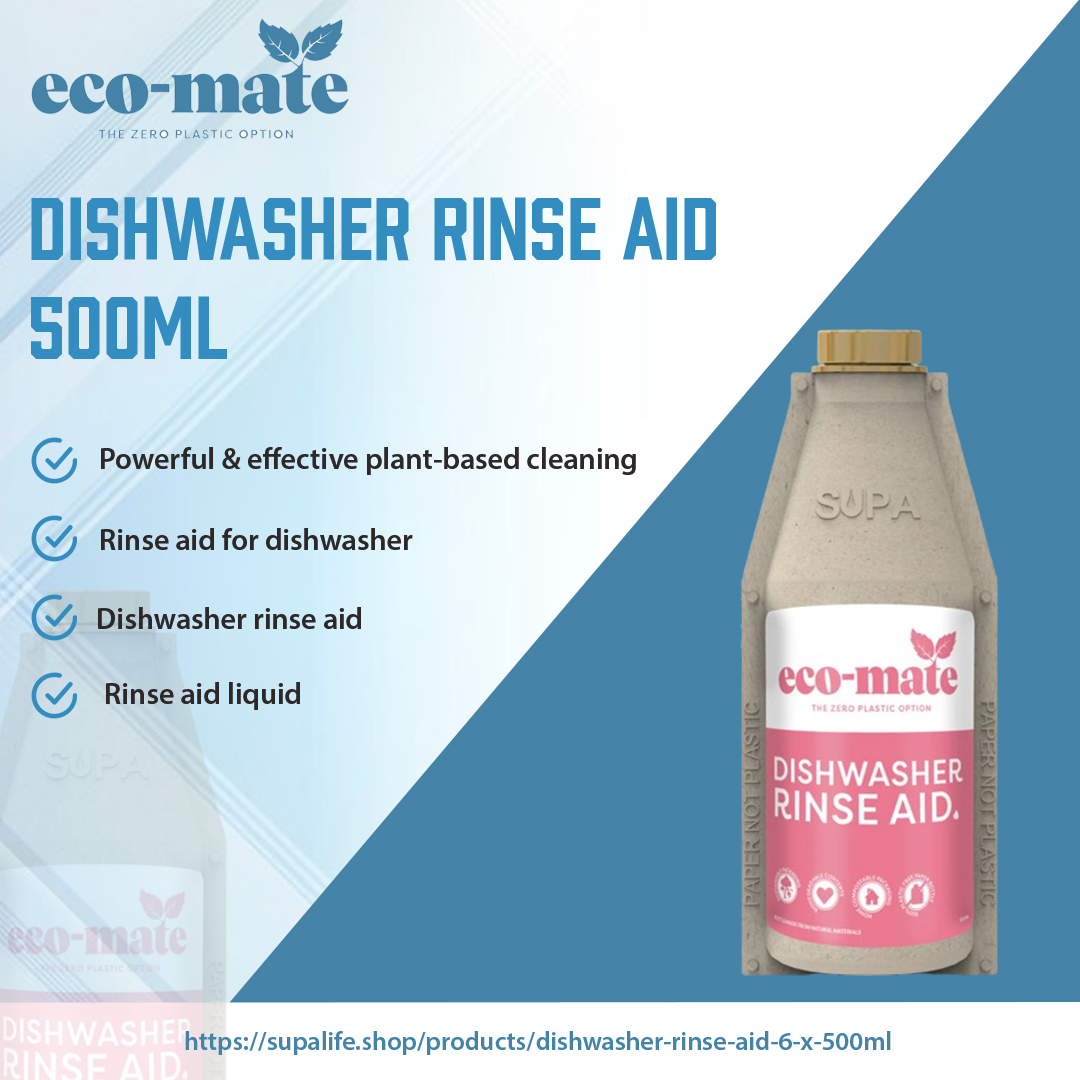Dishwashers are a modern marvel, freeing us from the tedium of hand-washing mountains of dishes. But achieving sparkling clean and perfectly dry dishes requires a team effort, and often, the unsung hero in this team is rinse aid. While dishwasher detergent cleans and removes food residue, rinse aid plays a crucial role in the final stages of the cycle, ensuring spotless shine and faster drying.
What is Dishwasher Rinse Aid?
Dishwasher Rinse aid, also known as a drying agent, is a liquid or gel concentrated formula dispensed during the final rinse cycle of your dishwasher. It typically contains surfactants, which are special cleaning agents that lower the surface tension of water. This allows water to sheet off dishes more easily, preventing the formation of water spots and streaks, especially in areas with hard water.
How Does Rinse Aid Work?
Here's a breakdown of the magic behind rinse aid:
1. During the final rinse cycle, the dishwasher dispenses a small amount of rinse aid.
2. The surfactants in the rinse aid spread over the water, forming a thin film on the surface of your dishes.
3. This film reduces the surface tension of water, allowing it to sheet off dishes in a continuous layer instead of forming droplets.
4. By eliminating water droplets, rinse aid prevents spots and streaks and promotes faster drying.
Benefits of Using Rinse Aid:
· Prevents water spots and streaks: This is especially helpful in areas with hard water, which contains minerals that can leave white residue on dishes after drying.
· Promotes faster drying: By allowing water to sheet off dishes more easily, rinse aid reduces drying time, which can be beneficial for plastic items that are prone to warping at high temperatures.
· Improves cleaning performance: While not directly cleaning food residue, rinse aid can help remove detergent residue left behind after the wash cycle, leading to cleaner dishes.
· Protects against hard water film: Rinse aid can help prevent the buildup of hard water film on glasses and silverware, keeping them sparkling and clear.
How to Use Rinse Aid:
Using rinse aid is a straightforward process:
1. Locate the rinse aid dispenser: This is typically a small reservoir located on the inside of your dishwasher door, usually next to the detergent dispenser. Consult your dishwasher's user manual for exact location.
2. Fill the dispenser according to the manufacturer's instructions. Avoid overfilling, as this can lead to sudsing and residue buildup.
3. Adjust the dosage if needed: Most rinse aid dispensers have adjustable settings. If you notice streaks or film on your dishes, you might need to adjust the amount of rinse aid used. Refer to your user manual for specific instructions.
4. Refill the dispenser regularly: The frequency of refills depends on the size of the dispenser and how often you use your dishwasher.
Do You Need Rinse Aid?
While not strictly necessary for basic cleaning, using rinse aid can significantly improve the final outcome of your dishwashing process, especially in areas with hard water. Here are some factors to consider:
· Water hardness: If you have hard water, rinse aid is highly recommended to prevent water spots and film buildup.
· Dishwashing habits: If you frequently wash delicate glassware, plastics, or cutlery, rinse aid can help them dry faster and prevent water spots.
· Desired results: If you're looking for sparkling clean and perfectly dry dishes, rinse aid can be a valuable addition to your dishwashing routine.
Choosing the Right Rinse Aid:
There are many rinse aid options available, but most popular brands are effective. Here are some factors to consider when choosing:
· Brand compatibility: While most rinse aids are generic and compatible with all dishwasher brands, some manufacturers recommend using their brand of rinse aid for optimal performance.
· Fragrance: Some rinse aids contain fragrances, while others are unscented. Choose one that suits your preference.
· Eco-friendly options: Look for rinse aids that are biodegradable and free of harsh chemicals if environmental concerns are a priority.
Tips for Using Rinse Aid Effectively:
· Avoid overfilling the dispenser: This can lead to sudsing and residue buildup.
· Clean the dispenser occasionally: To prevent blockages, clean the dispenser with warm water and a soft brush periodically.
· Adjust the dosage based on results: If you notice streaks or film, try reducing the amount of rinse aid used.
· Store rinse aid properly: Keep the bottle tightly closed and out of direct sunlight for optimal shelf life.
Conclusion
Dishwasher rinse aid, though often overlooked, plays a crucial role in achieving sparkling clean and perfectly dry dishes. By understanding its benefits, proper usage, and choosing the right product, you can elevate your dishwashing experience and enjoy spotless results every time.





Comments